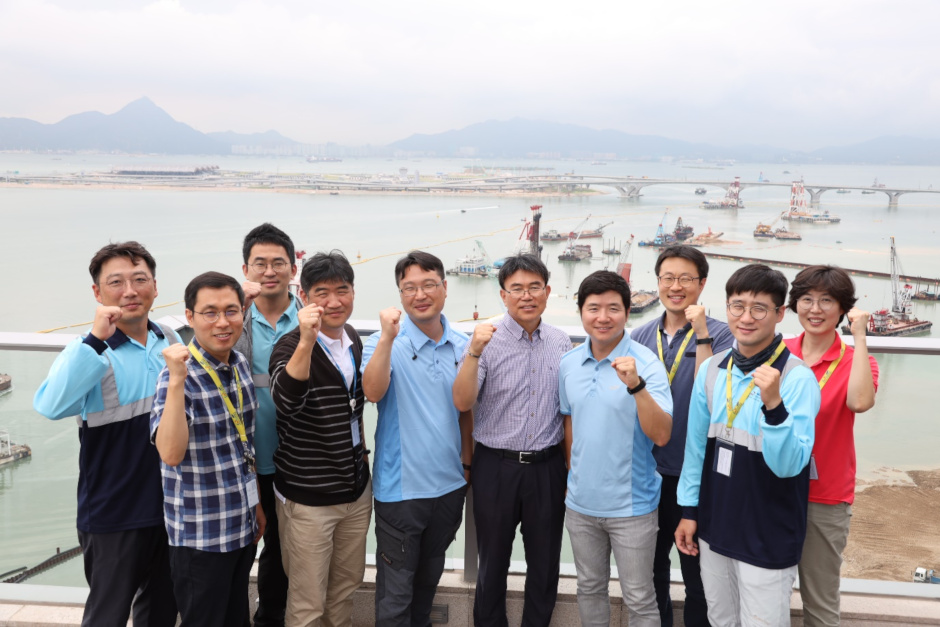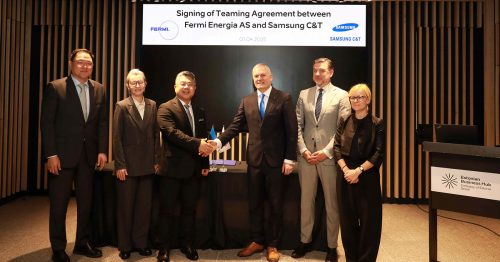Hong Kong is one of the most densely populated places in the world, with around 6,655 people per square kilometer. This has led to a serious housing shortage, but Hong Kong’s authorities are aiming to solve the problem by creating new space for residents to live in.
This is where land reclamation comes in, and a focal point of this effort to literally build land is Lantau Island. The local government’s Lantau Tomorrow Project is expected to get underway in 2025, with reclamation as well as other construction work like building marine bridges and underwater tunnels at a total cost of KRW 90 trillion (USD 77 billion).
But elsewhere on Lantau Island, the Tung Chung area is already witnessing Hong Kong’s first land reclamation project in 10 years. Placed in the hands of Samsung C&T’s Engineering & Construction Group, the Tung Chung mission is seen as an important benchmark for the Lantau Tomorrow Project.
Tung Chung reclamation site to be Hong Kong’s new residential foothold
The Tung Chung Reclamation Project includes plans to expand and develop the area’s residential zone and build a new town for 270,000 residents. Located just south of Hong Kong International Airport, which was itself built on reclaimed land, the Tung Chung project started in December 2017 and is set for completion in July 2024.
The goal may be ambitious but it is also straightforward: to tackle Hong Kong’s housing shortage by building a new town complete with homes, schools, shopping centers and business districts.
The sheer scale of the project in Tung Chung means transforming 134 hectares of sea into land – that is an area the size of around 188 soccer fields, requiring 2.7 million m3 of sand to be transported by the truckload. 1.6 million truckloads, to be more precise.
The value of DCM in Tung Chung
Samsung C&T’s challenge was to adopt a technique that would quickly improve and strengthen the ocean floor without relying on dredging. The company’s answer was Deep Cement Mixing (DCM), which no company had used in Hong Kong before Samsung C&T. DCM involves forming cement piles deep on the ocean floor and strengthening reclaimed land’s foundations.
One of the advantages of this technique is that it saves a lot of time. Other reclamation techniques require two years of pre-loading work to harden the ground – adopting DCM can cut down this period to just three months. Another benefit is to the land itself, as DCM produces less deformation of the ground and a high degree of construction and quality assurance. Moreover, it is relatively quiet, which is a plus for projects taking place next to existing residential zones.
Efforts to handle risk factors in advance
The importance of dealing with potential site problems before they occur is underscored by Project Manager Park Hong-shin. “It’s absolutely essential that all risk factors at the site be identified and eliminated in the first year of the project,” Park insists.
For example, there had been the issue of applying to carry out the DCM work. The company was able to swiftly negotiate this from an in-land application to offshore for greater efficiency. A further issue that came up was DCM work that needed to take place underneath a bridge. Due to the low height of the bridge and other obstacles, it would have been difficult to use conventional DCM equipment. Instead, Samsung C&T cooperated with its project partners to develop new types of equipment a full year before the start of construction and resolved all technical issues well in advance.
So, Samsung C&T is building Hong Kong’s new land with great attention to detail and prudence. For the sake of future residents, the years of hard work will no doubt have been worth it.










